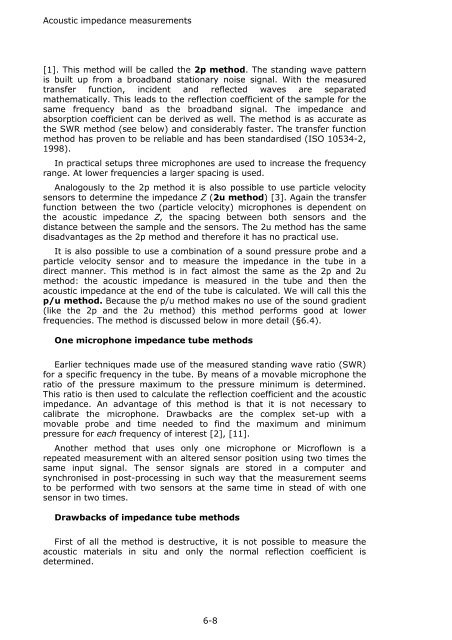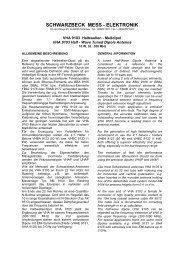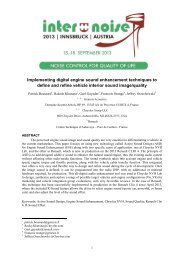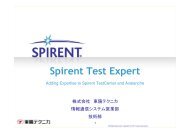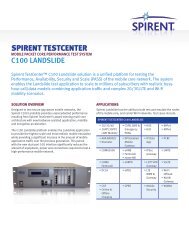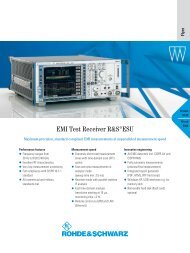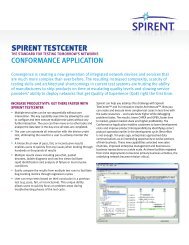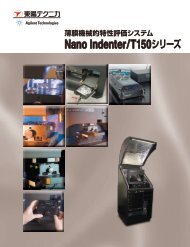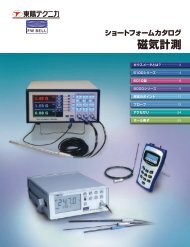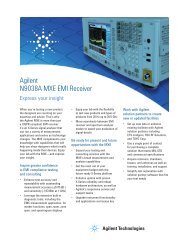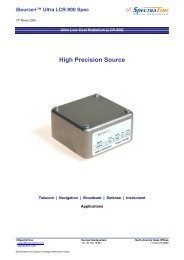Chapter 6: Impedance measurements
Chapter 6: Impedance measurements
Chapter 6: Impedance measurements
Create successful ePaper yourself
Turn your PDF publications into a flip-book with our unique Google optimized e-Paper software.
Acoustic impedance <strong>measurements</strong><br />
[1]. This method will be called the 2p method. The standing wave pattern<br />
is built up from a broadband stationary noise signal. With the measured<br />
transfer function, incident and reflected waves are separated<br />
mathematically. This leads to the reflection coefficient of the sample for the<br />
same frequency band as the broadband signal. The impedance and<br />
absorption coefficient can be derived as well. The method is as accurate as<br />
the SWR method (see below) and considerably faster. The transfer function<br />
method has proven to be reliable and has been standardised (ISO 10534-2,<br />
1998).<br />
In practical setups three microphones are used to increase the frequency<br />
range. At lower frequencies a larger spacing is used.<br />
Analogously to the 2p method it is also possible to use particle velocity<br />
sensors to determine the impedance Z (2u method) [3]. Again the transfer<br />
function between the two (particle velocity) microphones is dependent on<br />
the acoustic impedance Z, the spacing between both sensors and the<br />
distance between the sample and the sensors. The 2u method has the same<br />
disadvantages as the 2p method and therefore it has no practical use.<br />
It is also possible to use a combination of a sound pressure probe and a<br />
particle velocity sensor and to measure the impedance in the tube in a<br />
direct manner. This method is in fact almost the same as the 2p and 2u<br />
method: the acoustic impedance is measured in the tube and then the<br />
acoustic impedance at the end of the tube is calculated. We will call this the<br />
p/u method. Because the p/u method makes no use of the sound gradient<br />
(like the 2p and the 2u method) this method performs good at lower<br />
frequencies. The method is discussed below in more detail (§6.4).<br />
One microphone impedance tube methods<br />
Earlier techniques made use of the measured standing wave ratio (SWR)<br />
for a specific frequency in the tube. By means of a movable microphone the<br />
ratio of the pressure maximum to the pressure minimum is determined.<br />
This ratio is then used to calculate the reflection coefficient and the acoustic<br />
impedance. An advantage of this method is that it is not necessary to<br />
calibrate the microphone. Drawbacks are the complex set-up with a<br />
movable probe and time needed to find the maximum and minimum<br />
pressure for each frequency of interest [2], [11].<br />
Another method that uses only one microphone or Microflown is a<br />
repeated measurement with an altered sensor position using two times the<br />
same input signal. The sensor signals are stored in a computer and<br />
synchronised in post-processing in such way that the measurement seems<br />
to be performed with two sensors at the same time in stead of with one<br />
sensor in two times.<br />
Drawbacks of impedance tube methods<br />
First of all the method is destructive, it is not possible to measure the<br />
acoustic materials in situ and only the normal reflection coefficient is<br />
determined.<br />
6-8


